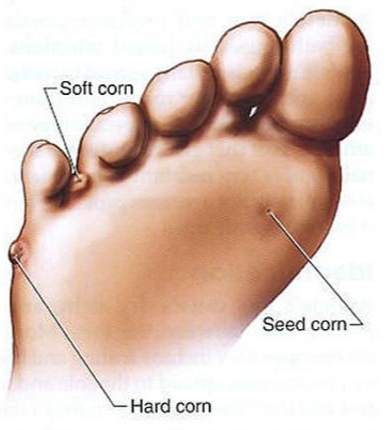

Foot corns are a common foot condition that affects numerous individuals worldwide. These painful and often unsightly growths can cause discomfort and hinder mobility. Understanding the causes and treatment options for foot corns is essential for effectively managing and preventing their occurrence. In this article, we will explore the causes of foot corns, discuss preventive measures, and delve into various treatment options available.
Causes of Foot Corns:
Foot corns, also known as helomas, are localized areas of thickened skin that develop due to excessive pressure or friction. The primary causes of foot corns include:
1. Ill-fitting footwear: Wearing shoes that are too tight or have high heels can lead to excessive pressure on certain areas of the feet, resulting in corn development.
2. High levels of physical activity: Engaging in activities that involve repetitive motion or excessive pressure on the feet, such as running or dancing, can increase the risk of corn formation.
3. Abnormal foot anatomy: Structural abnormalities, such as bunions or hammertoes, can cause uneven weight distribution on the feet, leading to corns in specific areas.
4. Foot deformities: Certain foot deformities, such as flat feet or high arches, can contribute to the development of foot corns by causing instability and abnormal pressure distribution.
Preventive Measures:
Preventing foot corns involves taking proactive steps to reduce pressure and friction on the feet. Here are some preventive measures to consider:
1. Choose appropriate footwear: Opt for well-fitting shoes with ample toe room and cushioning to minimize pressure on the feet. Avoid narrow or pointed-toe shoes and high heels, which can increase the risk of corn formation.
2. Wear protective padding: Utilize gel or foam padding to cushion areas prone to corns. These pads act as a barrier between the foot and footwear, reducing friction and pressure.
3. Maintain proper foot hygiene: Regularly washing and moisturizing the feet helps keep the skin supple and less prone to developing corns.
4. Use orthotic devices: Custom-made orthotic inserts can correct foot abnormalities, improve foot alignment, and distribute pressure evenly, reducing the likelihood of corns.
Treatment Options:
When foot corns do develop, several treatment options are available to alleviate discomfort and promote healing. It is important to consult a healthcare professional for proper diagnosis and advice tailored to your specific condition. Here are some common treatment approaches:
1. Non-medicated treatments:
a. Soaking: Soaking the feet in warm water helps soften the corn, making it easier to remove. Adding Epsom salts or mild soaps to the water can enhance the effectiveness of the soak.
b. Exfoliation: Gently exfoliating the corn with a pumice stone or foot file can help reduce its size and smooth the surrounding skin. It is important to avoid excessive rubbing, as it can cause injury.
c. Moisturizing: Applying moisturizing creams or lotions to the affected area can help soften the corn and prevent further dryness and cracking.
2. Medicated treatments:
a. Over-the-counter corn pads or plasters: These adhesive pads contain salicylic acid, which gradually breaks down the thickened skin of the corn. Follow the instructions carefully and discontinue use if any irritation occurs.
b. Prescription medications: In some cases, a healthcare professional may prescribe stronger topical medications.
Written by profT for naijatipsland.com










